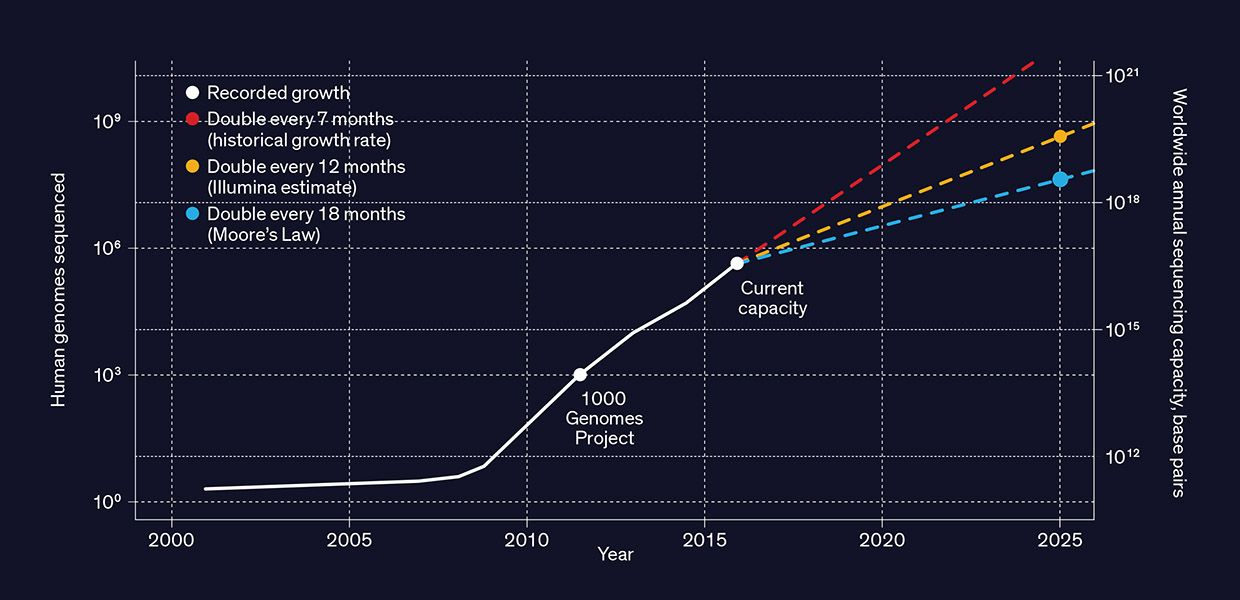Introduction to Bioinformatics
Photo by National Cancer Institute on Unsplash
Are you the kind of person who is interested in tinkering with computers programs but is easily bored with just studying computer science? Do you like biology enough to want to study it as well while still being able to find solace in your comfortable computer screen and lovely programs? Better yet, let’s add some dash of math and statistics as well to make your life more challenging and interesting, no?
If you like the thought of all those three fields together cramped up into one single major and think you can handle the challenges of that specific field….
I would like to welcome you to the field of Bioinformatics 🥳!
Of course this is a very general way of describing Bioinformatics, but it is what it is in a nutshell. Stick around and let me give you some deeper info and resources to get started!
Bioinformatics - Where Biology and Computers Collide
Bioinformatics doesn’t exactly have a well agreeable definitions per se, but what we do agree on, is that Bioinformatics is an interdisciplinary area of research consisting of biology, computational sciences, along with statistics and mathematics that deals with molecular biological information.
Let’s look at one of the definitions of Bioinformatics according to NIH :
Bioinformatics: Research, development, or application of computational tools and approaches for expanding the use of biological, medical, behavioral or health data, including those to acquire, store, organize, archive, analyze, or visualize such data.
From that definition, we can see that Bioinformatics deals with several things:
- To analyze and interpret biological, medical, behavioral or health data for research purposes in a meaningful manner.
- To develop new tools such as algorithms and statistics using computational tools to assess the use of such biological or medical information.
- To develop tools to manage different types of biological or medical information effectively. This can be done using methods such as databases or integrated mapping information.
“Why is it important anyway though?”
Well, think of it this way. All our advancements as a human starts with trying to make some sense into the unknown. I mean, we wouldn’t know what symptoms causes what disease if we don’t even understand the diseases itself.
How? The answer to that is by looking at the underlying data.
What’s that has to with Bioinformatics? To answer this one, we’d have to look at one monumental event in history. The Human Genome project. One of the most ambitious goal mankind has ever set upon, sequencing and identifying all base pairs in the human genome with a total approximation of ✨ 3.1 billion base pairs ✨.
“Cool project! But then what happened?”
Well, according to the National Human Genome Research Institute, we are left puzzled with almost half of the 3.1 billion base pairs of the human genome bearing ⭐no known function ⭐.
 Predicted Growth of Genome Sequencing from IEEE Spectrum
Predicted Growth of Genome Sequencing from IEEE Spectrum
And it’s not just the Human Genome Project. Over the years, the cost of sequencing biological sequences has decreased exponentially. Causing massive surge in biological data waiting to be analyzed. But to analyze these types of biological data, we would need special skill sets of computational understanding with a domain knowledge in the field. This is where Bioinformatics role kicks in to deal with these problems.
Where do we start?
Like previously mentioned, Bioinformatics is an interdisciplinary field. That said, you have to spare some time to learn each of the underlying field that makes up Bioinformatics as a whole. To give you a broad perspective on the topics you need to learn, you can refer to the list below.
Biology 🌏
- Biochemistry and Organic Chemistry
- System Biology
- Omics studies (i.e. Genomics, Proteomics, Transcriptomics etc)
- Gene Expression and Regulations
- Molecular Phylogenetics
- Population Genetics
- Biosystematics
- Experimental Designs
Computations 💻
- Basics of Command Line and Unix/Linux
- Bioinformatics Algorithms
- Data Structures
- Basic Programming (This could be in Python, but there are others using Java, R, etc)
- Data Mining
- Database Management
Mathematics and Statistics 📊
- Calculus
- Linear Algebra
- Discrete Mathematics
- Probability and Stochastic Processes
- Biostatistics
Closing
Bioinformatics is a broad field that requires significant time, effort, and energy to study. With an ever increasing amount of biological data, though, the demand for the field also increases coincidentally.
This article is meant to give you readers a general view of Bioinformatics and the learning paths necessary to achieve proficiency in the field. Same like any other field, Bioinformatics is an ever changing field and the guides presented her is not, by all means, irrefutable.
We’ll compile and gather resources to learn Bioinformatics in the next article. Until then :)

